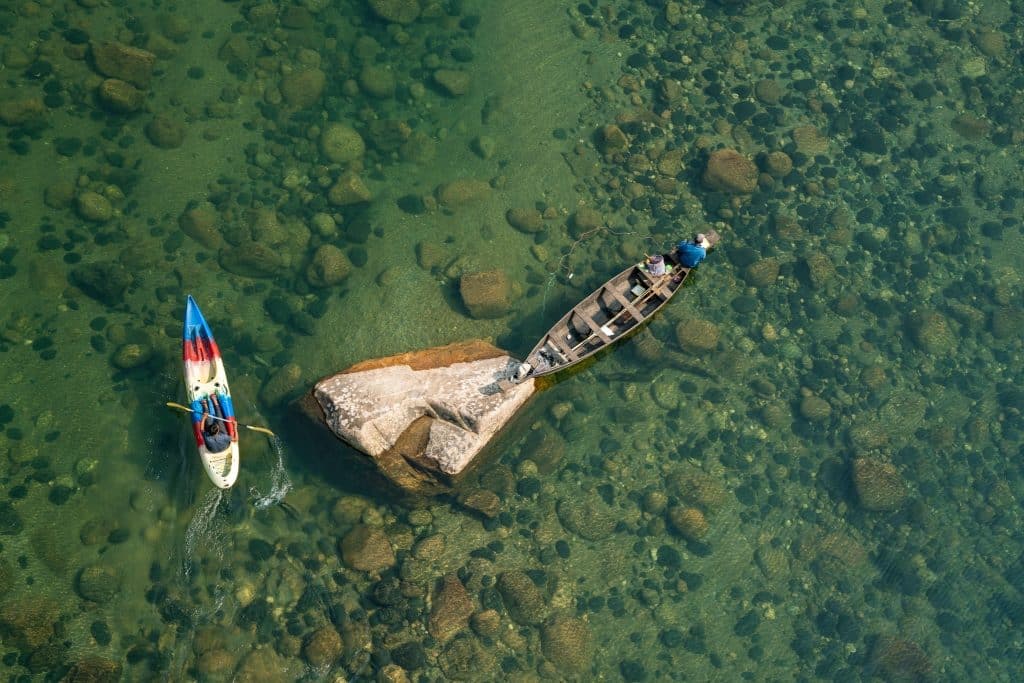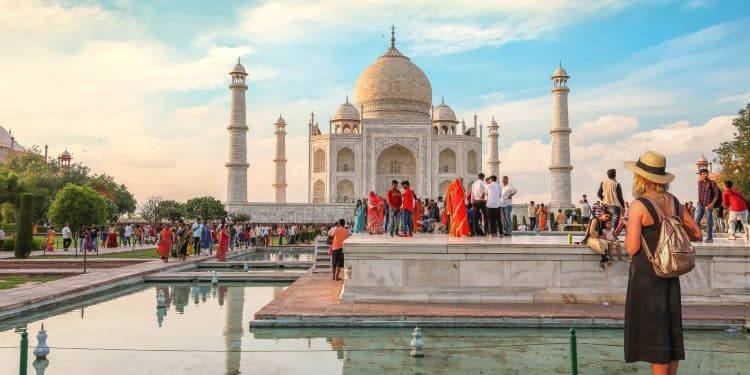India was a dream destination I never thought I could afford. The colors, the food, the history—it all seemed out of reach as a university student with limited funds.
But with a bit of planning, smart choices, and a few uncomfortable night buses, I made it happen. I managed to travel to India for two full months and spent less than I ever imagined possible. In this guide, I will walk you through exactly how I did it, from budgeting and accommodation to local travel hacks and hidden gems. If you have been putting off your travel to India because of finances, this is for you.
The Budget Breakdown: How Much I Actually Spent
Before I left, I set a total budget of $1,200 for two months, including flights. Yes, it sounds crazy. But here is how I broke it down:
- Round-trip flight from Dubai to New Delhi: $250 (booked 3 months in advance)
- Accommodation: $300 (mostly hostels, a few homestays)
- Food: $200 (street food + occasional sit-down meals)
- Transport within India: $200 (sleeper trains, buses, metros)
- Entrance fees + experiences: $150
- Miscellaneous: $100
Traveling to India on a student budget forces you to prioritize, which often leads to more meaningful experiences. I cooked with locals, stayed in shared dorms, and explored offbeat places tourists tend to overlook. Explore more budget travel stories here
Choosing the Right Route for Budget Travel
India is huge, and traveling long distances can eat into your budget if you are not careful. I picked regions that were rich in culture and variety but logistically efficient to navigate. Here is the route I followed:
- New Delhi (5 days) – Historic sites, food walks, and bustling bazaars.
- Agra (2 days) – The Taj Mahal and local marble workshops.
- Jaipur (5 days) – Forts, pink streets, and cheap markets.
- Pushkar (3 days) – A laid-back holy town perfect for unwinding.
- Udaipur (4 days) – Lakeside sunsets and rooftop cafes.
- Mumbai (7 days) – Local trains, street food, and colonial architecture.
- Goa (10 days) – Beaches, cheap scooters, and peaceful hostels.
- Hampi (5 days) – Ancient ruins and boulder landscapes.
- Kerala (10 days) – Backwaters, homemade meals, and stunning greenery.
Each leg was connected via overnight trains or buses. If you plan your travel to India smartly, sleeper trains save both money and time. Most of the travelers I met were also trying to travel to India affordably—and these cities gave us the best balance of cost and experience.
Accommodation: Hostels, Homestays, and Temples
If you are used to budget hostels in Southeast Asia, Indian hostels might surprise you. They are affordable, but many offer modern, clean, and social environments.
- Zostel and Moustache Hostels: These are chains found in major cities. Beds as low as $4–6 a night.
- Homestays in Kerala and Rajasthan: $8–15 a night, and often include homemade meals.
- Free Stays at Gurudwaras: In places like Amritsar or smaller towns, Sikh temples offer shelter and food for travelers.
Booking ahead is key during festivals or holiday seasons. I often used WhatsApp to confirm with hosts instead of relying on just apps. If you want your travel to India to include local connections, homestays are the way to go.
The Food Scene: Street Eats That Saved My Wallet
India’s street food is not only delicious—it is budget travel gold.
- Delhi’s Chandni Chowk: For $2, I filled up on samosas, chole bhature, and jalebi.
- Jaipur’s Lassi shops: A tall glass for $0.50 and a perfect midday break.
- Goa’s fish thali: Local shacks served complete meals for $2–3.
- South India: Masala dosas and idlis with sambar cost under $1.
Yes, you need to be cautious. I avoided raw veggies, drank only bottled water, and carried a small hand sanitizer bottle everywhere. Over two months of travel to India, I never got seriously sick—a minor miracle.
For more tricks like this, check out these essential travel hacks.

Getting Around: Trains, Buses, and Auto Rickshaws
Local transportation in India is cheap, but chaotic.
- Trains: I booked Second Class Sleeper for long distances. It was basic, but a great way to see the countryside and chat with locals. Use the IRCTC app or go through 12GoAsia.
- Buses: Sleeper buses between cities are affordable and often surprisingly comfortable.
- Rickshaws: Always negotiate or ask locals what the fare should be.
- Metro systems: Delhi and Mumbai metros were life-savers. Clean, fast, and cost under $0.30 per ride.
Transportation was a big part of the adventure and gave me a deeper view into daily life during my travel to India. You’ll learn quickly that to truly travel to India on a budget, you need to master its transport.
Hidden Gems Worth Every Rupee
While India’s big cities are exciting, the real beauty lies in the less-touristed places.
- Hampi: Imagine boulders, ancient temples, and surreal landscapes.
- Spiti Valley: A Himalayan desert with monasteries and starry skies.
- Chikmagalur: A coffee region in Karnataka where I stayed at a farm for $7/night.
- Varkala: A cliff-side beach town in Kerala that felt like a secret.
These stops reminded me why I wanted to travel to India—not just to check off landmarks, but to find quiet corners and deeper stories. You will find more ideas like this in the Epic Destinations section. If you want your travel to India to feel unique, do not miss places like these.
How I Managed My Finances
Carrying cash in India is important, especially in rural areas. But I used a few tools to keep spending in check:
- Revolut & Wise cards: No foreign exchange fees.
- Cash split strategy: I kept a main stash in my backpack, daily cash in a money belt, and backup cash hidden in socks.
- Expense tracker app: Every night, I logged my expenses into an app.
Despite some ATM struggles and currency conversion quirks, I stayed under budget. Having clear financial boundaries actually made my travel to India feel more intentional. Budgeting, more than anything, kept my travel to India sustainable and stress-free.
Digital Work and Staying Connected
I needed occasional Wi-Fi to check emails and submit small freelance gigs. Here is how I stayed connected:
- Airtel SIM card: I got 1.5 GB per day for 56 days for just $5. Speeds were fast, even in remote areas.
- Cafes and hostels: Most had Wi-Fi, but not always stable.
- Co-working spots: Found a few in Goa and Bengaluru.
India is surprisingly digital-friendly. If you are a freelancer or digital nomad, this is a place where you can balance work and adventure. Check out more insights on working abroad in our Digital Nomad section. Digital professionals who travel to India can thrive here with just a little planning.
Safety, Scams, and Culture Shocks
Was I ever scared? A little, especially arriving in big cities late at night. But by following common sense, I stayed safe.
- Dressing modestly helped, especially in rural areas.
- Trust your gut: If something felt off, I left.
- Pre-booking arrival transport saved me from taxi scams.
- Apps like Ola and Uber worked great in major cities and removed bargaining stress.
I was also constantly amazed by the kindness of locals—people offering chai, directions, or even free meals. If you travel to India solo, expect surprises—some uncomfortable, some unforgettable.
Backpack Essentials for a Budget India Trip
Some things I packed made a massive difference in keeping my travel to India affordable and smooth:
- Filtered water bottle: Saved money and reduced plastic waste.
- Quick-dry clothes: Helpful for hostel laundry.
- Power bank: Train rides are long, and outlets are rare.
- Microfiber towel: Lightweight and dries fast.
- Travel lock: Useful for hostels and trains.
The right packing list makes your travel to India easier. You do not need much—just what works.
What I Would Do Differently Next Time
Despite how much I saw, I barely scratched the surface. Here is what I would change if I could:
- Spend more time in fewer places: Travel to India is about soaking it in, not rushing.
- Explore the Northeast: I missed states like Meghalaya and Arunachal Pradesh, and I am already planning a return trip.
- Volunteer more: I met travelers who worked at schools or farms for food and board. That is on my list for next time.
The best part of budget travel is that it opens doors to experiences you might miss with a high-end itinerary. You are on the ground, up close, and living it.

Why India Should Be on Every Student’s Travel List
India tests you. It overwhelms, delights, confuses, and charms all at once. But if you are up for the challenge, the rewards are endless. Travel to India on a budget is not just doable—it is transformative.
I returned home with stories, friendships, and confidence that no textbook could have taught me. If you are wondering whether it is possible to travel to India on a student budget, the answer is yes—with planning, grit, and curiosity.
Ready to stretch your student budget and make unforgettable memories? Start planning your own epic journey now at Viral Voyage.



